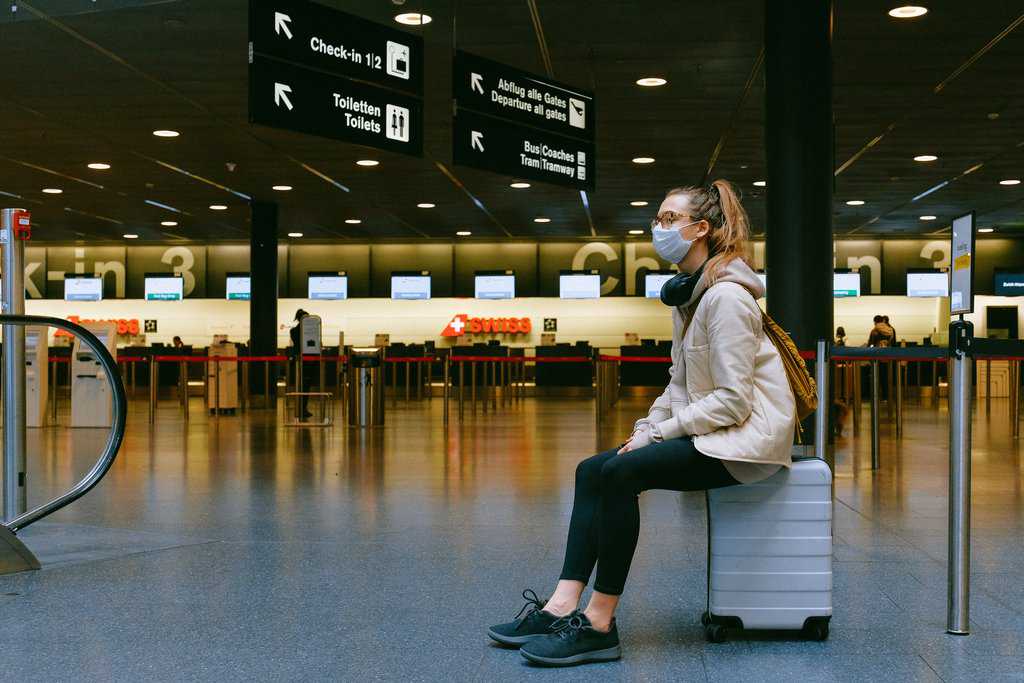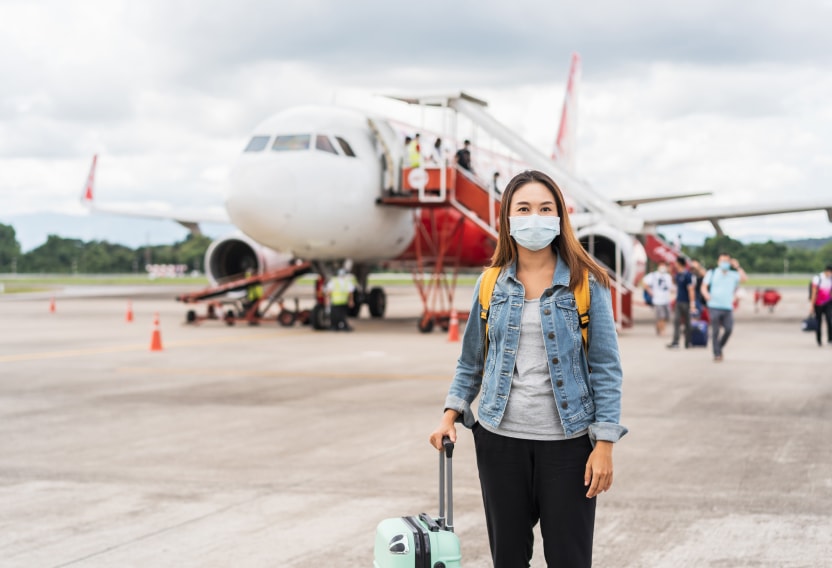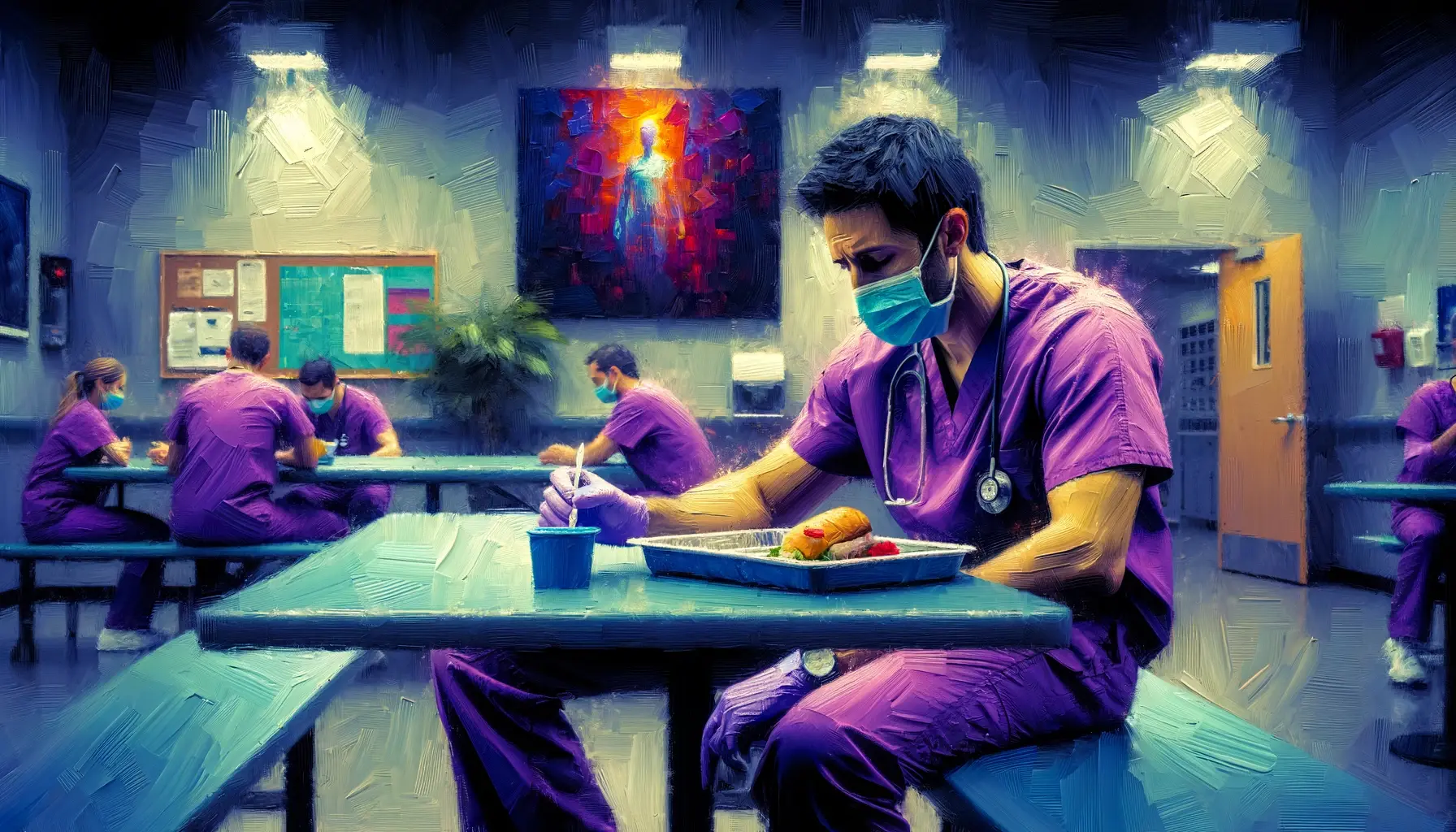As Coronavirus cases are ramping up in nearly every state in America, it’s becoming a bit more complicated to be a travel nurse. But if you’re planning to hop on a plane in the next few weeks to your next work destination, this guide has you covered. Here’s everything you should know about how travel is changing right now, and the best tips to staying safe, whether you’re commuting in a plane, train, bus or car.
Top Tips for Traveling Safe
Start planning your “Corona Travel Kit” weeks before you leave
Hand sanitizer, Clorox wipes, and other sanitary necessities are becoming hot commodities again. If you know you’re traveling, make sure you’re stocked up well ahead of time. And think hard about what you’ll need in various travel situations.
For instance, if you’re flying, you can only carry on a bottle of hand sanitizer that contains 12 ounces or less. So stock up on mini-bottles. And also consider alcohol and Clorox wipes (get both) as a better option for flying. After all, wipes can also sanitize where you’re sitting and putting your hands on. And you can use them to wipe down your phone and wallet. Disposable gloves can be useful too, but make sure not to touch your face with your gloves on.
If you’re driving, there are a couple of other items to consider bringing with you. Keep a package of trash bags handy as your Clorox wipes and disposable gloves begin to pile up. You could also consider buying an air purifier for your car if you’re driving with others.
Avoid shopping while traveling
Whether you’re flying or driving, the most likely way you’d come into contact with strangers is through shopping. Whether it’s buying a snack at a gas station, or a water bottle at the Starbucks near your terminal, this is putting you at extra-risk of interacting with strangers and touching items that others have likely also put their hands on. Just plan ahead and avoid this altogether if you can. Bring more snacks than you think you need, and plan for a packed lunch and possibly dinner, even if you’re flying. Bring an emptied reusable water bottle if you’re flying. And if you’re driving, bring multiple water bottles (though don’t drink so much that you have to stop to pee all the time).
Speaking of peeing, do it at your house before you go!
Cover that face!
It’s human nature to want to touch your face, and it’s a habit that is incredibly difficult to crack. So the easiest way to stop yourself from doing it in a high-risk situation like traveling is to cover as much of your face as possible. Wearing a mask is a given, but also wear your reading glasses or even your sunglasses if you can. It might not take the temptation away, but if you have to take the extra step of taking your glasses off before rubbing your eyes, you’ll have time to realize what you’re doing and quickly put some hand sanitizer on.
Check in to your flight online/ use a carry-on suitcase
Another way to avoid as much human contact as possible while flying is to check in ahead of time online, and try and limit yourself to a carry-on suitcase. That way you can head straight to security and skip a step of standing in line and talking to TSA.
Take a window seat
When you travel by air, you’re actually at quite a limited risk of contracting disease from inhaling particles because of the HEPA air filters found on most planes. But still, it’s hard to abide by the 6-feet-apart social distancing guidelines when you’re crammed in a plane. While you might usually prefer the aisle seat, consider taking the window seat instead. The aisle will put you in close contact with flight attendants and any passenger getting up to use the restroom.
Also, wear a mask for the duration of your flight. We know it sucks. But it will ensure your safety and the safety of those around you.
When driving, prepare for the worst
Limiting how many times you stop during a road trip also means prepping as much as you can to avoid emergency stops. AAA isn’t always going to save you, and it will put you in contact with strangers. Also, because of COVID-19, a lot of local repair shops have limited hours. Try and be as self sufficient as you can. Make sure you have a spare tire and jack, and practice changing a tire before you go. Get new wipers, your oil changed and your fluids topped off before you leave. Maybe even have someone who knows cars pretty well take a look at your engine.
As a last resort, look up all the auto-repair shops along your root and jot down their hours and numbers.
Change your mindset
If you’ve been in one place for several months, you might start getting lax about sanitizing your hands, not touching your face, or keeping 6 feet away from others. Even if you’ve been going into a hospital every day, it’s easy to be lulled into a sense of normalcy around this virus as we’re now into month four of the pandemic. So hours before you board a plane or get into a car to travel cross-state, put yourself into a little bit of a panic mode. You don’t want to have so much anxiety about traveling that you freak out and don’t think properly, but a little bit of fear can be powerful. Read a couple articles about the dangers of COVID-19 before you leave the house, to refamiliarize yourself with the risk you’re facing.
Make a checklist
And then once you’re sufficiently scared of this possibly-deadly virus, immediately make a checklist for everything you need to be mindful of before you get into an airport or a car.
For example:
- Am I touching my face?
- Am I applying hand sanitizer every 15 minutes or so, or before I touch my face? (You could even make a timer on your phone)
- Has my phone or wallet come in contact with any surface?
- When I’m taking my mask off for any reason, are my hands clean?
- What are the conditions in which it’s okay to take my mask off?
- How can I avoid contact with strangers as much as possible?
- If I’m driving, how many times should I expect to stop?
- Have I wiped down the gas pump before using it?
Plan for after you arrive
If you’re flying into your new destination, make sure you’re thinking about how you’ll get to where you’re staying once you get off the plane. Public transportation has been shut down in many states, and shuttles can be too-close-for-comfort. If you’re going to take an Uber, make sure to keep your mask on and the window down. Also look up where the pick-up location for ride-shares and taxis is before you land.
Also, if you’re staying in an AirBnb or some other temporary lodging, go to the state website and see if they’ve placed any kind of guidelines or restrictions on lodging. Some places like Maine, require you to present a negative COVID-19 test to the owners of your AirBnB or hotel.
Get Tested!
The best way to limit your travel and stress levels? Get tested for COVID-19 before you head out, and after you arrive. Make sure you get your test in time to have the results back before you leave, and try to quarantine as best you can while waiting for results.
Some states or workplaces ask that you get a test within 24 hours of arriving in your city. But if this isn’t your situation, try and wait four or five days after traveling to get tested. It’s more likely your test will be accurate if you wait a few days beyond when you think you might have been exposed. If you’re forced to take a test right when you get into the city, maybe take another one a week later, just to be safe.
Navigating travel restrictions
As states like Texas and Florida have begun seeing more cases than ever before, some other states are closing or restricting their borders to outside travelers coming from certain areas. If you’re traveling on assignment, these restrictions don’t necessarily all apply to you. Most states have made exceptions for essential workers, but it is still important to know all the rules before you travel. This will allow you to plan ahead and possibly arrive in a city a few weeks before your assignment starts if you are expected to quarantine. Restrictions can change week-by-week and even day-by-day, but here are some of the states that have travel restrictions as of Thursday, July 2.
Connecticut, New York and New Jersey
Governors of the tri-states all came together late in June and decided they would place restrictions on travelers coming from high COVID areas. Travelers coming from a state that has a positive test rate higher than 10 per 100,000 residents or a state with a 10% or higher positivity rate over a 7-day rolling average are expected to quarantine for 14 days.
These states as of Thursday are: Alabama, Arizona, Arkansas, California, Florida, Georgia, Idaho, Iowa, Louisiana, Mississippi, Nevada, North Carolina, South Carolina, Tennessee, Texas and Utah. You can always check for updates here.
Each of the three states has slightly varied exemptions for essential workers and short-term travel, as well as enforcement.
In New York, essential workers, which includes almost any kind of health care worker, “should seek diagnostic testing for COVID-19 as soon as possible upon arrival (within 24 hours) to ensure they are not positive.” They’re also directed to avoid spending prolonged time in public places or congregate settings for at least 7 days. So don’t go to the outdoor patio bar until you’ve gotten your COVID test results back. If you are reported or caught violating any of these travel restrictions in New York, you’re subject to a $2,000 fine. Governor Andrew Cuomo hasn’t gone into great detail about what enforcement will look like, but you might want to have some kind of hospital or work identification with you at all times, especially in the airport. You can read the full travel advisory here.
Connecticut’s travel policy is a little more lax. It simply states that travelers who work in critical infrastructure as designated by the Cybersecurity and Infrastructure Security Agency are exempt from quarantine. You might want to call the helpline if you are working somewhere that is not an Emergency Room, because the CISA only designates “emergency medical services” as essential. Connecticut has no fine for violators of the quarantine. “It will be up to individuals to abide by the advisory.”
Finally, New Jersey says that anyone “traveling for business” is exempt from the quarantine rule. While vague, this should include travel nurses. And the quarantine is technically voluntary.
New Mexico
At the start of June, New Mexico reinstated its order that outside travelers from anywhere must self-quarantine for 14 days. Healthcare workers are excluded from this policy, but if you have friends or family traveling with you, check out all the rules related to travel quarantine here.
Rhode Island
Rhode Island’s list of states subject to travel restrictions is even longer than the tri-state list. You can check out the current 24 states here. If you’re traveling from one of these states, you are expected to quarantine for 14 days, OR you can get a COVID-19 test and only quarantine until you receive negative results.
If you need to go to work straight away, you can also get a COVID-19 test 72 hours prior to your arrival in Rhode Island, and the restrictions will be waived when your results come back negative.
Maine
Maine requires that all travelers coming from anywhere except New York, New Jersey, Connecticut, New Hampshire and Vermont, quarantine for 14 days, or get a COVID-19 negative test result shortly before or after arriving. Maine is particularly strict with its policy, and requires non-residents to sign a Certificate of Compliance indicating either that they have received a negative COVID-19 test result or that they will quarantine in Maine for 14 days. If you’re staying in an Airbnb, hotel or any other kind of lodging, you’ll be expected to present this Certificate of Compliance to the owner of said establishment. Essential workers are exempt from this.
Florida, Hawaii, Kansas, Massachusetts
To check out the details of all these states’ travel restrictions, go to this Southwest page. Southwest, and most other airlines, keep track of all the changing travel restrictions on their home sites, so keep checking them regularly to see if any of these policies might affect you.
Itching to travel to your next destination?
Now that you’re informed about how to keep yourself safe while traveling, are you ready to pick a new nursing gig? Remember that with Stability Healthcare, you can easily find great travel nursing placements. Sign up today!




